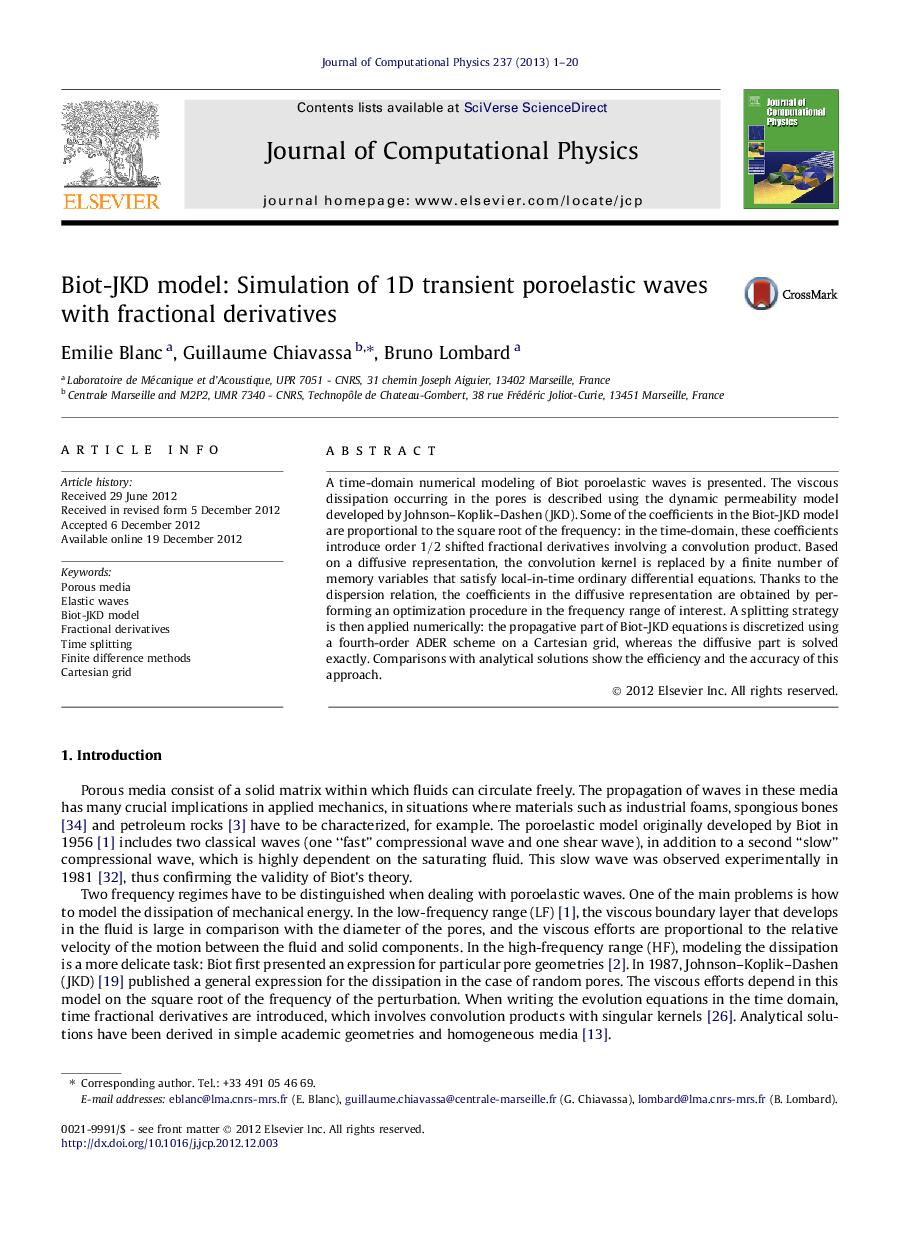| Article ID | Journal | Published Year | Pages | File Type |
|---|---|---|---|---|
| 521528 | Journal of Computational Physics | 2013 | 20 Pages |
A time-domain numerical modeling of Biot poroelastic waves is presented. The viscous dissipation occurring in the pores is described using the dynamic permeability model developed by Johnson–Koplik–Dashen (JKD). Some of the coefficients in the Biot-JKD model are proportional to the square root of the frequency: in the time-domain, these coefficients introduce order 1/21/2 shifted fractional derivatives involving a convolution product. Based on a diffusive representation, the convolution kernel is replaced by a finite number of memory variables that satisfy local-in-time ordinary differential equations. Thanks to the dispersion relation, the coefficients in the diffusive representation are obtained by performing an optimization procedure in the frequency range of interest. A splitting strategy is then applied numerically: the propagative part of Biot-JKD equations is discretized using a fourth-order ADER scheme on a Cartesian grid, whereas the diffusive part is solved exactly. Comparisons with analytical solutions show the efficiency and the accuracy of this approach.
